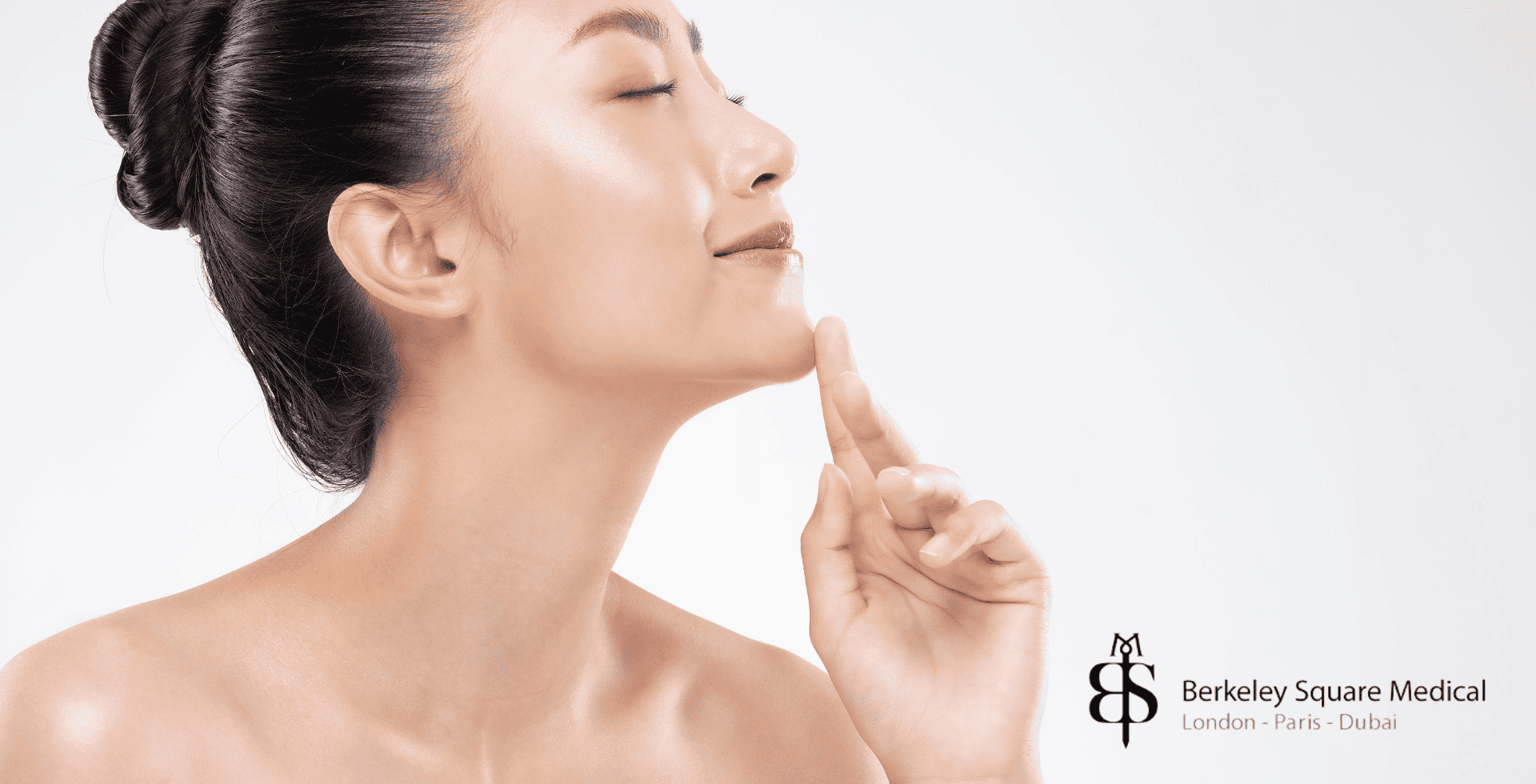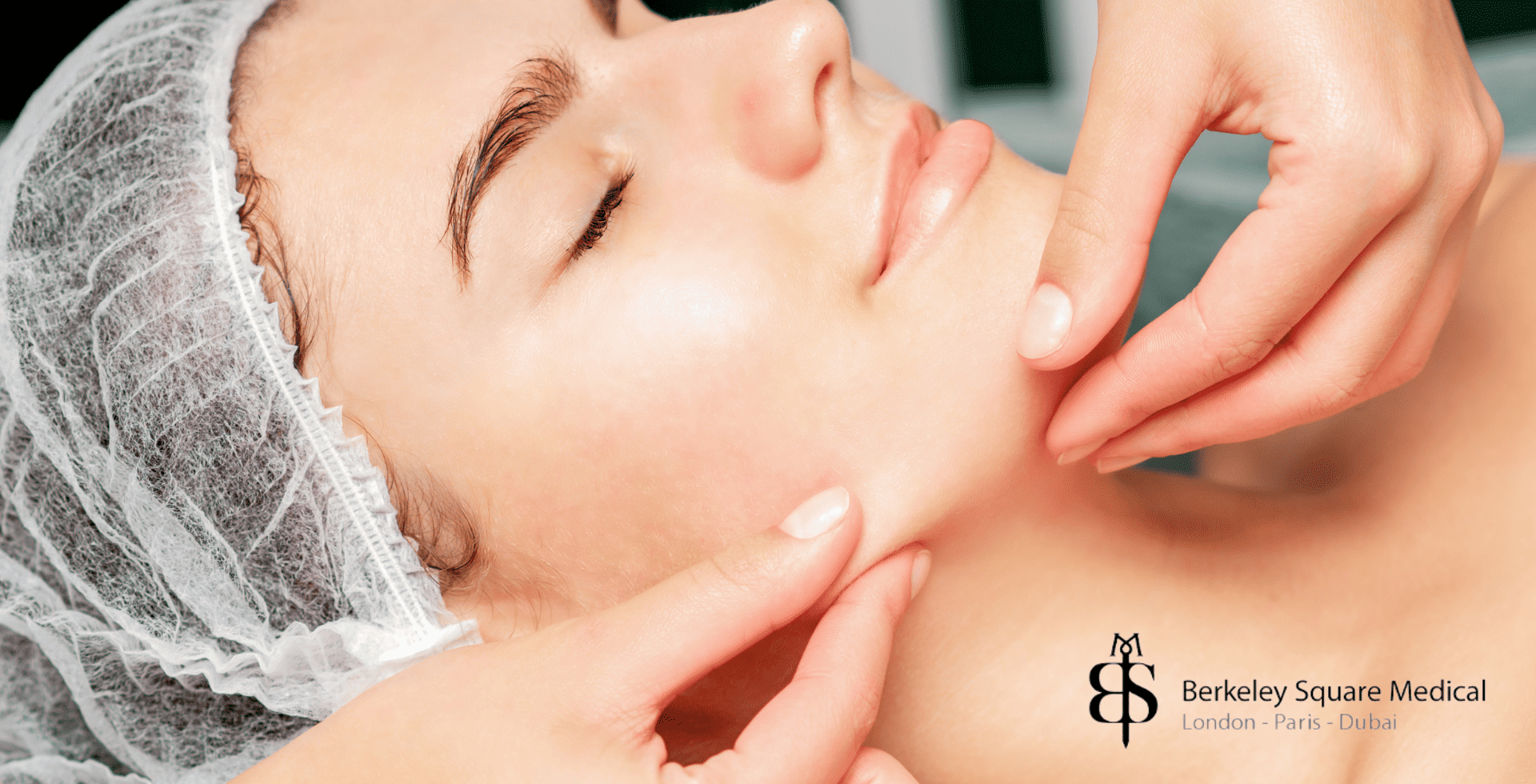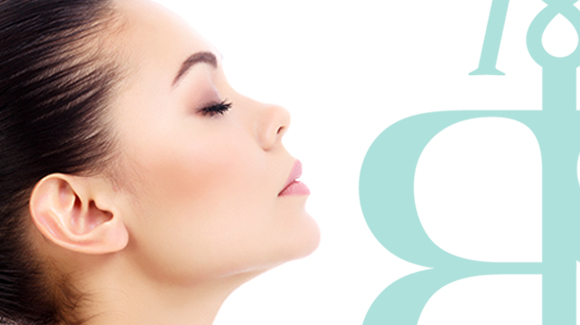Often resistant to traditional methods of diet and exercise, a double chin, also known as submental fullness, can detract from an individual’s self-confidence and aesthetic desires. This common cosmetic issue can be influenced by a variety of factors, including genetics, lifestyle choices, and the natural ageing process, making it a challenge for many to overcome through conventional means.
In the realm of cosmetic procedures, liposuction emerges as a potent and popular solution to this problem. Specifically, liposuction on the chin area has gained traction as a focused and effective method for eliminating unwanted fat deposits that contribute to the appearance of a double chin. This procedure, known for its precision and effectiveness, offers a path to achieving a more defined jawline and an elegant neck contour.
Potential Reasons for Double Chin
This section explores the various elements that play a role in the development of a double chin.
Genetic Factors
One of the primary contributors to the formation of a double chin is genetics. Just as our genes determine our hair and eye colour, they also influence fat distribution in our bodies. Some people are genetically predisposed to accumulate fat beneath the chin and jawline, making them more likely to develop a double chin, regardless of their overall body weight or fitness level.
Lifestyle and Diet
While genetics play a significant role, lifestyle and diet also contribute significantly to the presence of a double chin. Excess body weight can lead to fat accumulation in various areas, including under the chin. However, it’s important to note that even individuals who maintain a healthy weight and lifestyle can still experience submental fullness due to genetic factors.
Age and Skin Elasticity
As we age, our skin loses its elasticity due to the natural decline in collagen and elastin production. This reduction in skin firmness can lead to sagging skin, including the area under the chin, exacerbating the appearance of a double chin. Additionally, the ageing process can change fat distribution patterns in the body, contributing further to this issue.
The Limitations of Diet and Exercise
Many individuals attempt to address their double chin through strict dieting and rigorous exercise. While these approaches are beneficial for overall health and can lead to weight loss, they may not always effectively target the fat deposits under the chin. This is particularly true for those who have a genetic predisposition or are experiencing age-related changes.

What is Liposuction?
Liposuction is a cosmetic procedure widely recognised for its ability to reshape and contour various parts of the body by removing excess fat. It involves the use of a hollow instrument, known as a cannula, which is inserted under the skin. A powerful vacuum is applied to the cannula, extracting fat from the targeted area. Liposuction can be performed on various parts of the body, including the abdomen, thighs, buttocks, and, importantly for our focus, the chin and neck area.
Types of Liposuction Techniques
Several liposuction techniques are available, each with its unique approach and advantages. The choice of technique often depends on the specific needs and goals of the patient, as well as the surgeon’s expertise. Common types include:
- Tumescent Liposuction: This is the most common form, involving the injection of a sterile solution into the area where fat is to be removed. The solution consists of saline (salt water), along with lidocaine (a local anaesthetic) and epinephrine (a drug that contracts blood vessels). This mixture helps to numb the site, reduce blood loss, and facilitate fat removal.
- Ultrasound-Assisted Liposuction (UAL): UAL uses ultrasonic vibrations to turn fat cells into liquid. Once the cells are liquefied, they can be vacuumed out. This method is often used in areas with more dense or fibrous fat.
- Laser-Assisted Liposuction (LAL): LAL uses laser energy to liquefy fat cells. Once the fat is liquefied, it is removed through a cannula.
Liposuction on the Chin: Procedure Details
When it comes to addressing submental fullness, or a double chin, liposuction offers a targeted solution. This section explores the specifics of the chin liposuction procedure, providing insights into what patients can expect before, during, and after the surgery.
Pre-Operative Preparations
Before undergoing liposuction on the chin, patients undergo a thorough consultation process. This includes:
- Medical Evaluation: A comprehensive medical history review and a physical examination to assess the patient’s overall health and suitability for the procedure.
- Discussion of Expectations: The surgeon discusses the patient’s aesthetic goals and what liposuction can realistically achieve.
- Preparatory Instructions: Patients receive guidance on pre-surgery preparations, including dietary restrictions, medication adjustments, and avoiding certain activities like smoking.
The Procedure
Chin liposuction is typically an outpatient procedure, meaning patients can go home the same day. The steps involved are:
- Anaesthesia: Local anaesthesia is commonly used for chin liposuction, which numbs the area but keeps the patient awake. In some cases, sedation or general anaesthesia may be used.
- Making the Incision: A small incision, often less than a centimetre, is made under the chin or in a discreet location to minimise visible scarring.
- Fat Removal: The surgeon inserts a cannula through the incision to break up and suction out the fat. Techniques like tumescent, UAL, or LAL may be employed.
- Closing the Incision: Once the desired amount of fat is removed, the incision is closed with sutures, and a dressing is applied.
Post-Operative Care and Recovery
After the procedure, patients enter a recovery phase, which typically involves:
- Immediate Post-Op Care: Patients are monitored for a short time before being allowed to go home. Instructions are given for managing discomfort and caring for the incision site.
- Recovery Time: While recovery varies, most patients can return to normal activities within a few days to a week. Strenuous activities should be avoided for a period recommended by the surgeon.
- Follow-Up Visits: Patients usually have follow-up appointments to monitor healing and discuss any concerns.
Patient Selection Criteria
Not everyone is an ideal candidate for chin liposuction. Suitable candidates generally include those who:
- Have localised fat deposits under the chin.
- Possess good skin elasticity, which helps the skin conform to the reduced contours post-surgery.
- Are in good overall health with realistic expectations about the outcome.
Combining Liposuction with Other Neck Rejuvenation Techniques
While liposuction is a powerful tool for removing excess fat, particularly in the chin and neck area, it may not always be sufficient on its own, especially in cases where skin laxity or other aesthetic concerns are present. This section explores how liposuction can be effectively combined with other neck rejuvenation techniques to enhance overall results.
Liposuction effectively reduces fat but does not address excess or sagging skin. As we age, our skin loses elasticity, which can lead to a saggy appearance, particularly in the neck area. This is where additional procedures can play a crucial role in achieving a more comprehensive rejuvenation.
Common Procedures Combined with Chin Liposuction
Neck Lift (Cervicoplasty and Platysmaplasty):
Cervicoplasty: This procedure involves the removal of excess skin to tighten and lift the neck area.
Platysmaplasty: This targets the neck muscles, tightening and altering them to provide a more youthful neck contour.
Both procedures can be combined with liposuction to address fat removal, skin laxity, and muscle banding in the neck.
Rhytidectomy (Facelift):
In some cases, a facelift is recommended alongside chin liposuction. This procedure addresses sagging facial skin and wrinkles, providing an overall rejuvenated appearance that complements the enhanced jawline and neck contour from liposuction.
Skin Tightening Treatments:
Non-surgical skin tightening procedures, such as radiofrequency or laser treatments, can also be combined with liposuction. These treatments stimulate collagen production, improving skin elasticity and firmness.
Benefits of Combination Treatments
Combining liposuction with other procedures offers several benefits:
- Enhanced Aesthetic Results: By addressing not just fat but also skin and muscle tone, combination treatments can lead to more comprehensive and satisfying outcomes.
- Harmonious Facial Balance: Treating multiple areas can create a more balanced and harmonious facial appearance.
- Efficiency: Undergoing combined procedures can be more efficient, reducing overall recovery time compared to having multiple separate surgeries.
Considerations for Combination Procedures
- Surgeon’s Expertise: It is crucial to choose a surgeon with experience in both liposuction and the additional procedures being considered.
- Recovery and Risks: Combination procedures may involve a longer recovery period and a different risk profile compared to liposuction alone. These should be thoroughly discussed with the surgeon.
Expected Outcomes and Efficacy of Chin Liposuction
Chin liposuction is a highly effective procedure for those seeking to enhance their facial profile by reducing submental fullness. This section will outline what patients can typically expect in terms of results, the consistency of these results, and the overall impact on their appearance.
Short-Term Outcomes
- Following the procedure, patients will initially experience swelling and bruising, which can mask the immediate results.
- As the swelling subsides over the following weeks, the reduction in submental fullness becomes more apparent.
- Most patients start to see noticeable improvements within a few weeks post-surgery.
Long-Term Efficacy
- The results of chin liposuction are generally long-lasting, as the fat cells removed during the procedure do not regenerate.
- However, it’s important to maintain a stable weight and healthy lifestyle to preserve the outcomes, as significant weight gain can affect the overall appearance.
Consistency of Results
- High Success Rate: Chin liposuction typically has a high success rate, with many patients achieving their desired outcomes.
- Predictability: Due to the localized nature of the procedure and the advancements in liposuction techniques, the results are often predictable and consistent.
- Individual Variability: The final results can vary based on individual factors such as skin elasticity, the amount of fat removed, and the body’s healing response.
Impact on Appearance and Self-Perception
- Enhanced Facial Contour: By removing excess fat from under the chin, liposuction can significantly improve the jawline’s definition, resulting in a more youthful and contoured facial appearance.
- Profile Improvement: The reduction of submental fullness can lead to a more balanced side profile, often described as more elegant or refined.
- Boost in Confidence: The aesthetic improvements from chin liposuction can lead to a substantial boost in self-confidence and body image.

Risks, Side Effects, and Safety for Liposuction on the Chin
While chin liposuction is generally considered a safe and effective procedure, it’s important for patients to be aware of the potential risks and side effects.
Common Side Effects
- Bruising and Swelling: These are the most common side effects post-surgery. While they are temporary, they can be noticeable and may take several weeks to fully subside.
- Pain and Discomfort: Some degree of pain and discomfort is expected after the procedure, but this is typically manageable with prescribed or over-the-counter pain relief.
- Numbness: Patients may experience temporary numbness in the treated area due to nerve irritation, which usually resolves on its own.
- Scarring: The incisions made during liposuction are small, and while they do leave scars, they are often minimal and strategically placed to be less visible.
Rare but Serious Complications
- Infection: As with any surgical procedure, there is a risk of infection, although it’s relatively rare with proper post-operative care.
- Skin Necrosis: This occurs when the skin above the liposuction area loses its blood supply and dies. It’s a rare complication but requires immediate medical attention.
- Contour Irregularities: Sometimes, uneven fat removal can lead to lumps or indentations in the skin. Skillful technique and proper patient selection can minimise this risk.
- Burns: In techniques involving heat (like laser-assisted liposuction), there’s a small risk of burns.
Safety Considerations
- Consultation and Medical History: A thorough pre-operative consultation and review of medical history are vital to assess the patient’s suitability and minimise risks.
- Choosing the Right Surgeon: It’s crucial to choose a board-certified plastic surgeon with experience in chin liposuction. Their expertise significantly reduces the risk of complications.
- Understanding Limitations and Risks: Patients should have realistic expectations and understand the procedure’s limitations and potential risks.
- Following Post-Operative Instructions: Adhering to the surgeon’s post-operative instructions can greatly reduce the risk of complications and ensure a smooth recovery.
Recovery and Monitoring
- Post-Operative Care: Proper care after surgery, including rest, avoiding strenuous activities, and following wound care instructions, is essential for a safe recovery.
- Regular Follow-Up Appointments: These are important for monitoring the healing process and addressing any concerns promptly.
Alternatives to Liposuction
While liposuction is a popular and effective method for addressing submental fullness (double chin), it is not the only option available. For those who are hesitant about undergoing surgery or are seeking non-surgical alternatives, there are several other treatments to consider. This section explores some of the most common non-surgical alternatives to liposuction for reducing a double chin.
Injectable Treatments: Kybella
- Kybella (Deoxycholic Acid): Kybella is an FDA-approved injectable treatment designed to reduce submental fullness. It uses a synthetic form of deoxycholic acid, a naturally occurring molecule in the body that helps break down and absorb dietary fat. When injected into the fat beneath the chin, Kybella destroys fat cells, resulting in a noticeable reduction in fullness under the chin.
- Procedure Details: Kybella treatments typically involve multiple small injections under the chin, and the process takes about 15 to 20 minutes. Patients may require multiple sessions, spaced at least one month apart, to achieve their desired results.
- Recovery and Side Effects: The procedure has minimal downtime, but common side effects include swelling, bruising, pain, numbness, and redness in the treated area.
CoolSculpting (Cryolipolysis)
- CoolSculpting: This is a non-invasive treatment that uses controlled cooling to freeze and eliminate fat cells. It is designed for spot reduction of fat and can be used under the chin.
- Procedure Details: During the treatment, a device is placed on the target area to cool the fat cells to a temperature that destroys them without harming surrounding tissue.
- Recovery and Results: There is no downtime associated with CoolSculpting, making it a convenient option for many. Results are typically seen within one to three months post-treatment.
Radiofrequency Treatments
- Radiofrequency Therapy: This non-surgical method uses energy waves to heat the deep layer of the skin, which stimulates collagen and elastin production, resulting in tighter skin. It can be used for mild to moderate submental fullness.
- Procedure and Effectiveness: Radiofrequency treatments are generally quick and painless, requiring multiple sessions for optimal results. While effective for skin tightening, their fat reduction capability is less than that of Kybella or CoolSculpting.
Ultrasound Therapy
- Ultrasound Fat Reduction: Ultrasound therapy, like Ultherapy, uses focused ultrasound energy to target the layers of fat beneath the skin. It is non-invasive and can also stimulate collagen production.
- Procedure and Results: The treatment involves directing ultrasound energy to the targeted area. Results are gradual and may require several sessions over a few months.
Considerations for Non-Surgical Alternatives
- Suitability: Non-surgical alternatives are best suited for patients with mild to moderate submental fullness and good skin elasticity.
- Results: While these methods can be effective, the results may be less dramatic than surgical liposuction and might require ongoing treatments to maintain.
- Cost and Convenience: Non-surgical treatments often appeal to those seeking less invasive options with minimal downtime, although the total cost and number of sessions required should be considered.
For more information please visit our Liposuction page.
References and Further Reading
- Mayo Clinic on Liposuction: Discusses liposuction for stubborn fat, including chin and neck, highlighting risks like contour irregularities and infection, and emphasising the importance of stable weight post-procedure. (Mayo Clinic)
- MedlinePlus on Liposuction: Details liposuction as a body contouring tool, not for weight loss, noting risks like shock, fluid overload, and uneven fat removal, and possible hospitalisation for recovery. (MedlinePlus)
- “Outpatient-Based High-Volume Liposuction” (2023): A study in the Aesthetic Surgery Journal reviewing techniques, outcomes, and considerations in high-volume liposuction based on 310 patients. (Aesthetic Surgery Journal)
Sanjay is a Senior Clinical Member at Berkeley Square Medical carrying over a decade of experience. He has assisted over 1500 surgeries carried out at the hospital supporting patients both pre and post-surgery throughout their treatment journeys. This article was written with the contribution of
Dr Taimur Shoaib, our Consultant Plastic Surgeon.
Latest posts by Sanjay Rai
(see all)
